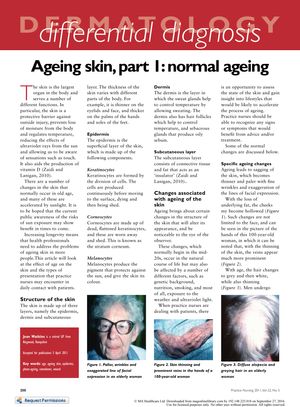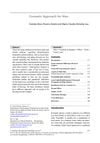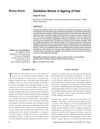Aging Skin, Part 1: Normal Aging
May 2011
in “
Practice nursing
”

TLDR As skin ages, it gets thinner, paler, and more wrinkled, and protection and care like sunblock and moisturizers are important.
The document from 2011 outlined the normal changes in ageing skin, which start in the mid-20s and are affected by genetics, nutrition, smoking, and especially UV light exposure. It described how ageing skin becomes thinner, paler, and more wrinkled, while hair grays, thins, and men may experience male pattern baldness due to genetics and DHT sensitivity. Photo-ageing from sun exposure can cause lentigo, solar elastosis, and sebaceous hyperplasia, among other symptoms. Additional age-related changes include senile actinic purpura, senile comedones, skin tags, cherry angiomas, and slower wound healing, with dry skin and itching also being common. Management strategies include sun protection, emollients, and possibly topical retinoids, while lesions that could be confused with malignancies should be biopsied or removed. The document highlighted the need for health professionals to address ageing skin issues as life expectancy increases.




